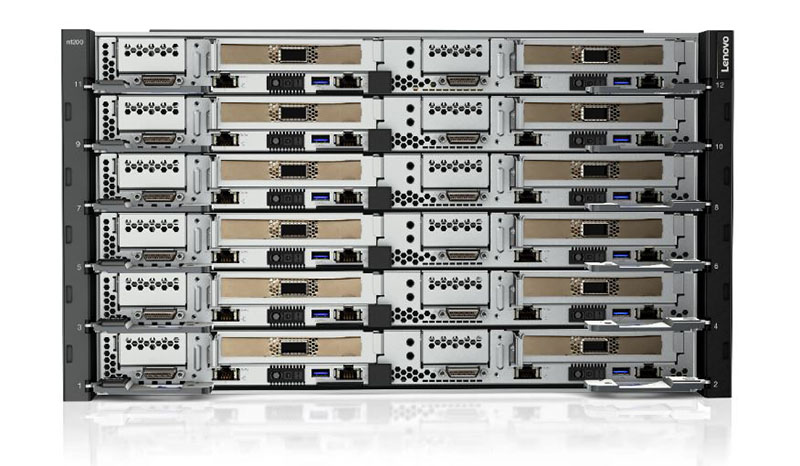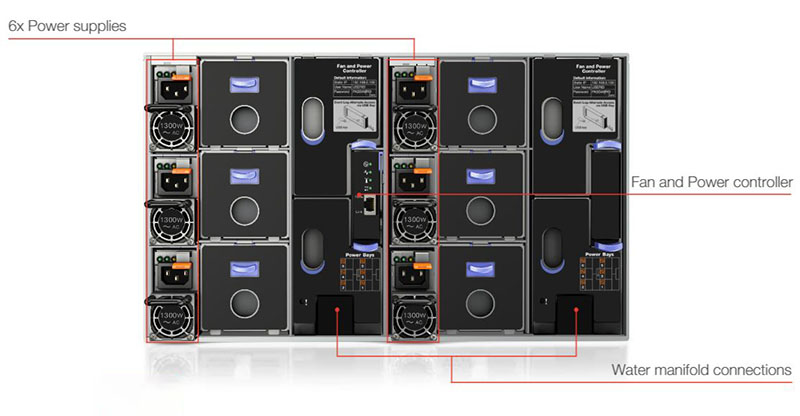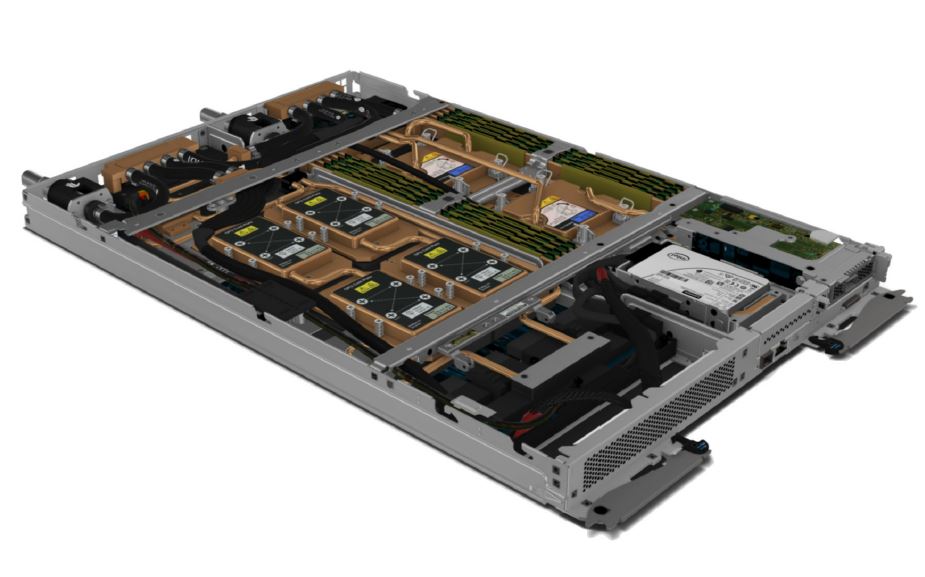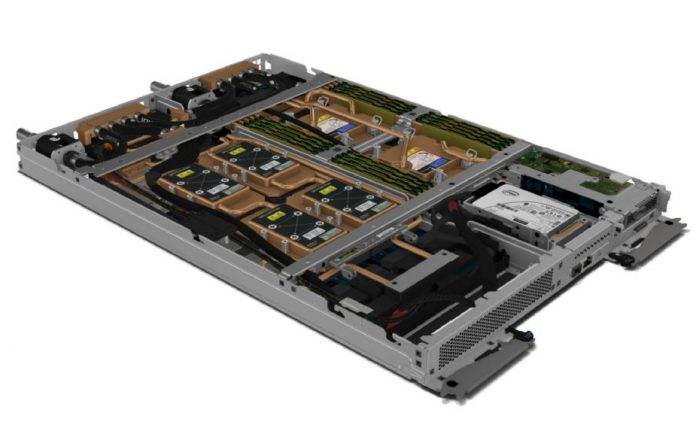For those eagerly awaiting the 3rd Generation of Intel Xeon Scalable processors, codenamed Ice Lake, we are starting to see more of the platforms shown. Several vendors at SC20 showed solutions for Ice Lake Xeons. One of them that we wanted to cover is the Lenovo ThinkSystem SD650-N V2. This new system combines the next-gen Intel Xeon CPUs with NVIDIA A100’s for a liquid-cooled high-performance computing (HPC) node.
Lenovo ThinkSystem SD650-N V2
Above we have the image of the node that we will discuss, but we wanted to give our readers some sense of where a ThinkSystem SD650-N V2 will be installed. In our The Harvard Cannon Powered by Lenovo Neptune article we covered the SD650 chassis where each of these 1U nodes is installed into a 6U enclosure. This is the same as the specs from the ThinkSystem SD650-N V2.

Here is the rear of the Lenovo Neptune powered chassis with the power and liquid I/O called out along with a chassis controller.

In terms of specs, we can see that the node pictured above has dual 3rd Gen Intel Xeon Scalable processors. We get PCIe Gen4 which means, according to Intel via Ice Lake Xeon at SC20 these are Ice Lake 3rd gen instead of 3rd Generation Intel Xeon Scalable Cooper Lake nodes. We also get 16x DDR4-3200 DIMM slots which aligns to Ice Lake’s 8-channel memory.

These nodes are not just about the CPUs. Instead, we see an area that looks roughly the size of a NVIDIA Redstone 4x NVIDIA A100 GPU platform on the closer edge of this picture. There are four NVIDIA A100’s which align with that view. This is not the first liquid-cooled 4x NVIDIA A100 system we have seen. Indeed even the NVIDIA DGX Station A100 is a desk-side platform with four liquid-cooled A100’s. That NVIDIA system is designed to be a development vehicle while one waits for delivery and installation of a large scale system built on platforms like this Lenovo SD650-N V2.

We are sorry we could not give you more photos of this system. We asked but are a bit limited by the fact that SC20 is virtual this year.
Final Words
Something that is a bit different this time around is that Intel is allowing more of its partners to show Ice Lake generation servers. These servers were reportedly plentiful in backrooms of SC19 per our Editor-in-Chief Patrick. Now we are seeing them shown a lot more. For those looking at HPC clusters, liquid cooling will take over an incrementally higher amount of market share in this generation as TDPs rise and HPC infrastructure professionals look to gain more efficiency. The Lenovo Neptune solution uses a lot of custom engineering which adds value versus other parts. We have heard some customers note how when they tested liquid-cooled solutions, Lenovo’s was highly customized, but it also was the one that did not leak.
On a broader scale, this is showing a new marketing direction for Intel. Historically, we tend to see Intel is focused on preventing its partners from showing next-gen systems this far ahead of launch. Now, to counter the AMD EPYC, and rising Arm competition, Intel is allowing partners like Lenovo to show off more ahead of the official launch. We expect in the next quarter this will ramp up significantly.





Are there any standards for the externak oart of the water loop?
*external part
derp